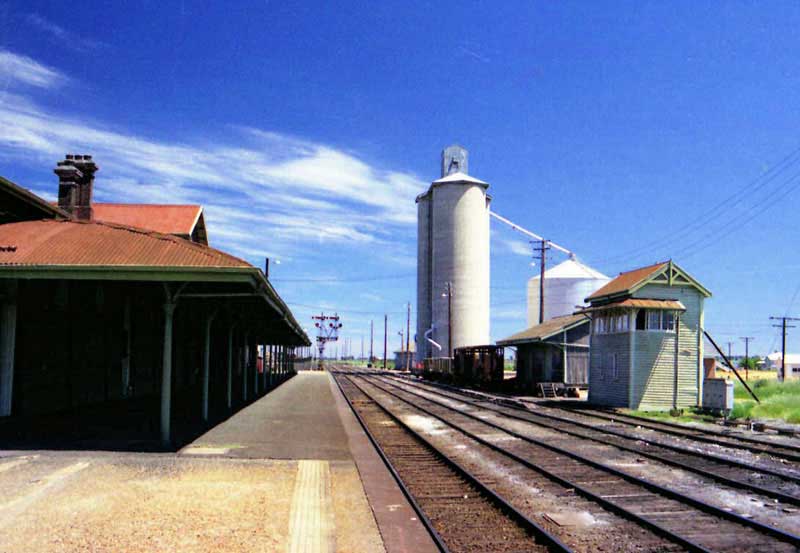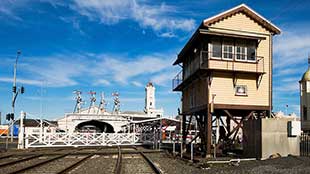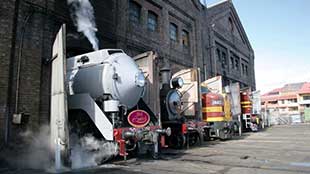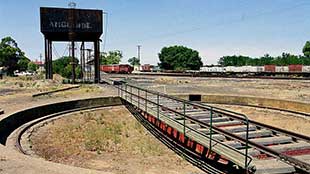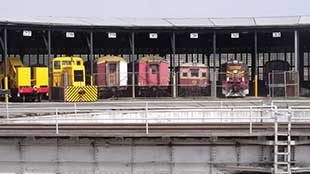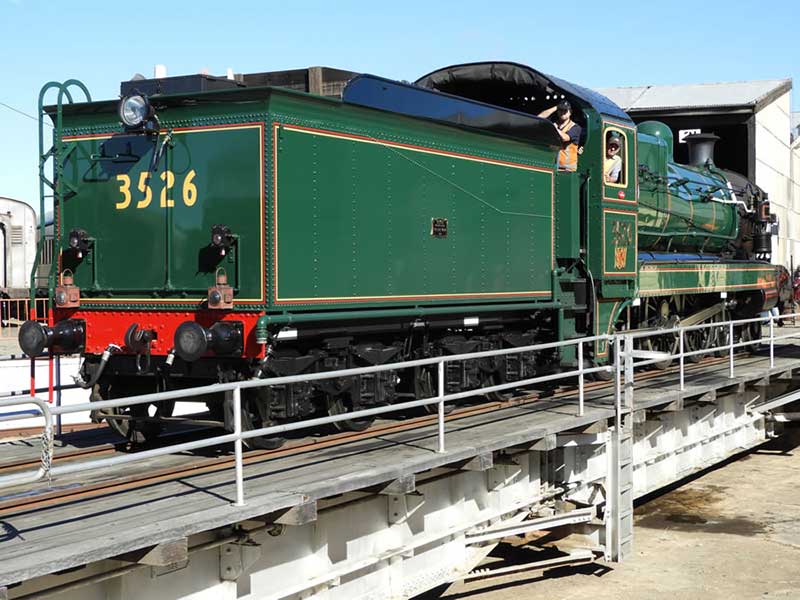Wheels and Wheel Slip

The world's railways have been operating with the same basic steel wheel on steel rail interface for over 200 years. That is one of the main reasons trains are very efficient This steel on steel interface was adopted not only because of its strength and low wear properties, but also because it offers a low rolling resistance, thus reducing considerably the effort required to move heavy loads.
Locomotives generate huge amounts of thrust, but in order for it to use this thrust effectively, the wheels on the locomotive have to be able to apply this thrust to the track without slipping. Traction when going around turns is not an issue because train wheels have flanges that keep them on the track. But traction when braking and accelerating is an issue.
You may have noticed how difficult it is to move a car by hand and that is because the total area of contact can be very small per wheel. But unlike tyres on asphalt or concrete, it is very easy for a locomotive wheel set to break free and spin during high loads such as starting or climbing steep grades.
There have been instances of trains in tunnels unaware they are standing still and the wheels are slipping. The heat generated has melted rails causing the locomotive to be unmovable without a great deal of work and limited area to resolve the problem.
To help overcome this problem, sand is used to increase adhesion, preventing wheel slip. It is used either at start up (when the locomotive is beginning to pull the train and needs the additional traction), or when going up a hill or grade (to keep the locomotive from slipping backwards). Although a diesel locomotive runs differently than a steam locomotive, sand is still stored and dispensed much the same way.
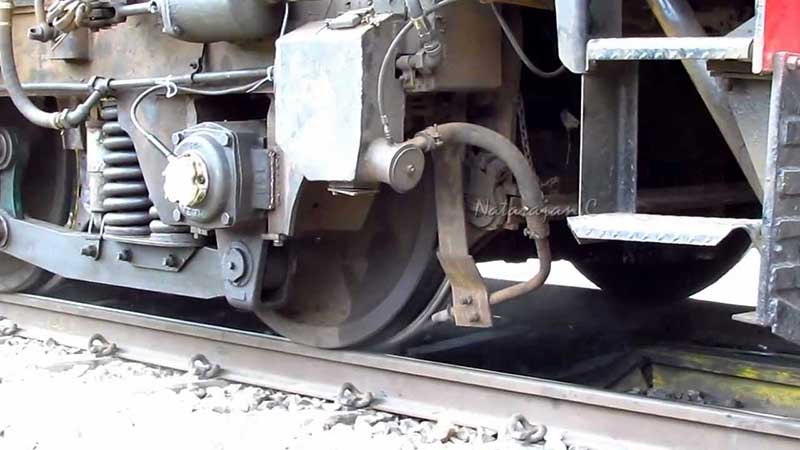
In front of each wheel is a nozzle that uses compressed air to spray sand, which is stored in two tanks on the locomotive. The sand dramatically increases the traction of the drive wheels.
Steam (and diesel) locomotives have a valve inside the cab area that the engineer can open and close in order to dispense sand to the drivers. The sand may be delivered by gravity, by a steam-blast (steam locomotives) or by compressed air. Gravity sanding requires that the sand be dry so that it runs freely. Locomotives use multiple sandboxes, so that their delivery pipes could be short and nearly vertical. Engine sheds were equipped with sand drying stoves, so that sandboxes could be refilled each morning with dry sand.
Many modern trains have an electronic traction-control system that automatically starts the sand sprayers when the wheels slip or when the engineer makes an emergency stop. The system can also reduce the power of any traction motor whose wheels are slipping.
One seldom-considered use of sand was for cleaning the flues of oil burning steam locos. The low-grade oil burned in steam locos would deposit a layer of soot in the flues, impeding both heat transfer and the free flow of combustion gases through the boiler. When the loco was steaming hard (and developing maximum draft) the fireman would hold a scoopful of sand at the partially-open firebox door, allowing it to be sucked into the firebox and through the flues. The resultant black cloud would send birds to roost at noon.
Track contamination
Not only can rails can be severely damaged by uncontrolled wheel spin, braking sand scattered at a low speed can cause an isolating effect between the wheel and the rail in the case of individually driven traction vehicles. If too much sand is applied, it can lead to other problems, especially at the track points or level crossings, where the sand cannot slip sideways. Lastly, the sand increases the friction between rail and wheel flange, which counteracts the wheel flange lubrication; the reduced wheel flange lubrication increases the danger of the wheels climbing up the rail.
3801 crash
The New South Wales heritage steam locomotive 3801 was involved in a major accident in which the use of traction sand appears to have been a contributing factor. In May 1990, two trains collided due to sand creating a signalling fault on the line between Sydney and Newcastle. The sand was being released onto the tracks by train 3801 to increase its traction while climbing uphill. A total of 93 people were injured and six people died. The force of the impact destroyed the last carriage of the historic train and demolished the front carriage of the Sydney train, which derailed in the accident.
Six people died, 99 passengers were injured, 11 of those seriously. The force of the crash completely destroyed the last carriage of the steam train, and was enough to break the locomotive coupling and push the engine 12 metres forward. An interim ban was placed on the use of steam locomotives on the New South Wales railway system. Today, steam locomotives riding on system lines must have locomotion back-up in the form of a diesel locomotive.
Train Wheels and the Laws of Friction
Friction is the force resisting the relative motion of solid surfaces, fluid layers, and material elements sliding against each other. Take your one palm on another palm. Now start rubbing. It may slide easily. Now give pressure by both hands and start rubbing. This time it will not be easy. What is the difference in the second time? The pressure given by your hand increases the frictional force. And this frictional force opposed the sliding.
In the case of a train, the heavy weight of wagons can be treated as a huge force. This force creates a frictional force between the wheels and the steel rail. So if wheels don't slip on railway tracks when pulled by a locomotive, how does the frictional force actually act on the wheels and keep the train rolling?
As per Amonton’s first law of friction, “The force of friction is directly proportional to the applied load”. The force is applied by means of the weight of wagon, coach, or loco itself. This load (force) comes through the wheel and ultimately onto the track. The weight of the wagons transfers to the railway track through ball bearings fitted on the axle. Here two frictional forces are created, one on the ball bearing and the other between wheel and track. In ball bearings, the frictional force is a lubricated frictional force. And between the wheel and track the frictional force is a dry frictional force. The dry frictional force is greater than the lubricated frictional force, which is why the wheels turn.

